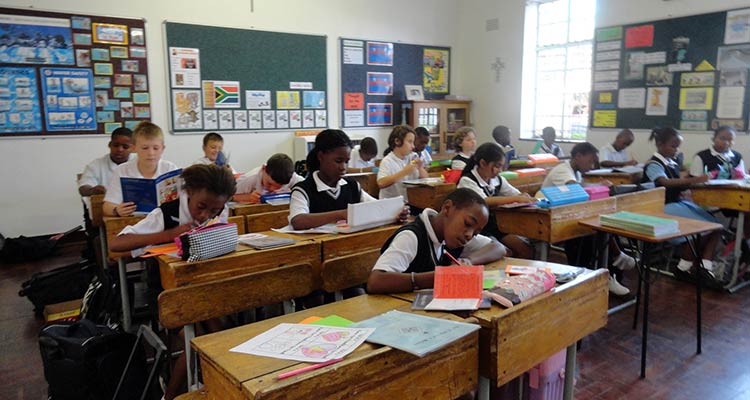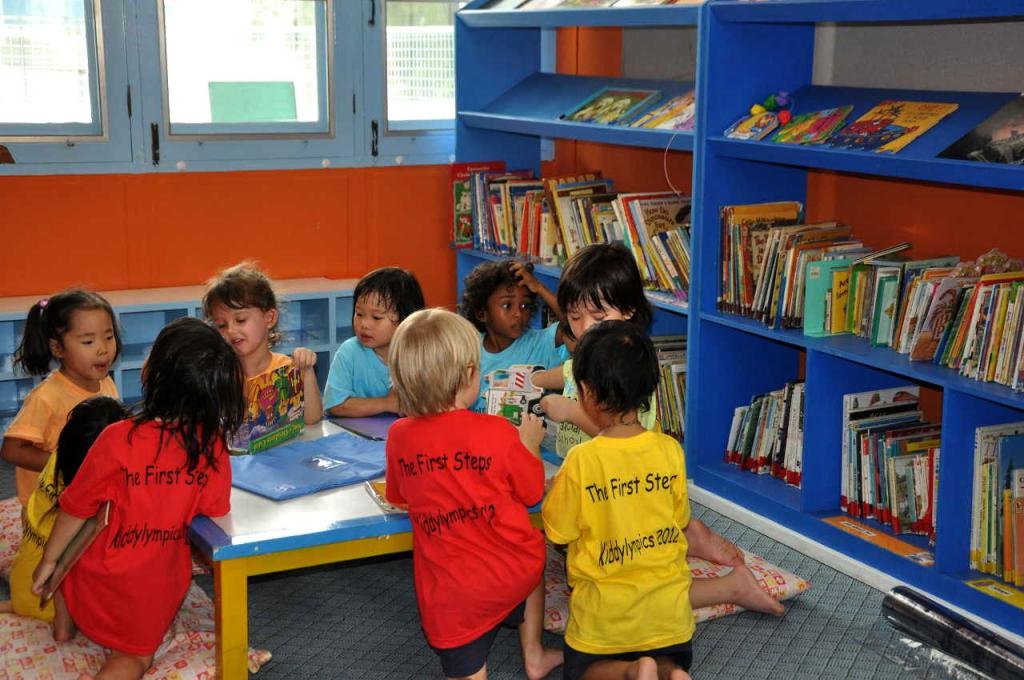Not every teacher knows what number the occupancy of each class should not exceed. Of course, this is also unknown to parents. The occupancy rate is prescribed in SanPin, so they must be observed. Let's talk about the number of children in classes and other important standards for successful study.
What regulates occupancy
Not a single norm is taken "from the ceiling." Each rule has a legislative basis. Therefore, we will list all the documents affecting the number of children in the class:
- The federal law of our country of December 2012 "On education in the Russian Federation."
- Decision of the State Chief Sanitary Doctor of December 2010 "Sanitary and epidemiological requirements for the organization of training and the conditions of an educational institution."
- Order of September 2013 "On the approval of educational activities in general education programs and organization procedures."
- Resolution of the State Chief Sanitary Doctor dated July 2015 "Sanitary and epidemiological requirements for the organization of training, conditions, education in institutions that carry out educational activities for students with disabilities."
These regulations state which figure should not exceed the occupancy rate of each class.

Standard framework
First, we give the norms for city schools. According to all normative acts published above, the occupancy rate of each class should not exceed twenty-five people. This is due to the fact that the number of students in the entire school should not be more than the institution can accommodate. Today, schools for one thousand students are being built.
In the villages, the standards are different. Rural elementary schools should not interfere with more than eighty people as a whole in an institution. If the school has both junior and middle classes, then the occupancy rate increases to two hundred and fifty people. When an institution has been teaching students for eleven years, the total number of students should not be more than five hundred.
Despite these requirements, in urban schools you can see more than thirty students in one class. Why it happens? Many parents and teachers are aware that the occupancy of each class should not exceed a certain amount. Even if they do not know the exact numbers, then they assume that thirty people are quite a lot. This picture is observed, since the Constitution of our country guarantees everyone the right to education. That is, each child who has reached school age must be attached to the school and enrolled in it. If the director does not, then he will violate the constitutional rights of the child. Of course, the Constitution is not to blame, because it does not say that it is not necessary to build new schools.
What determines the number of students
Class occupancy depends on adherence to the area requirements for one student, as well as requirements regarding the arrangement of furniture. This also includes mandatory standards for remoteness from windows. Requirements for natural and artificial lighting also play an important role in this matter. If all conditions are met, then classes can be divided into groups that are formed, depending on the subject. As you can see, class occupancy is not a figure taken from the head, but a clearly verified number of children, observing which, training can be made as effective as possible.

Space requirements
When calculating the area of the study room, they do not take into account the meters that will be needed for additional storage facilities for equipment or teaching aids used in the classroom.
The maximum occupancy of a class depends on the area of the room. It is calculated as follows:
- At least two and a half square meters are allocated per student. This applies to those classrooms where classes are held in frontal form.
- Three and a half square meters are allocated per student. We are talking about premises where group or individual lessons are held.
It turns out that the maximum occupancy of a class depends only on how many people can accommodate a room without compromising the learning process. In this case, you need to consider that in high school, training takes place in different classrooms. If their area allows you to accommodate more children, then the occupancy of the class will increase.
A responsibility
Let us return to the question that the principal cannot fail to take the child to school. By this decision, he violates the constitutional right of a person to free education. In this regard, liability is even provided, the basis for which will be the unlawful restriction of the right to education.
The punishment is provided for in the Code of Administrative Offenses. It spells a penalty for:
- Illegal restriction of the right to education or its violation. It is expressed in that the child’s constitutional rights to receive free and accessible education are violated or limited. This also includes the director’s refusal to accept the child at school or the expulsion of the student from the institution. Misconduct is punishable by a fine. Officials will have to pay from thirty to fifty thousand rubles, and legal entities - from one hundred to two hundred thousand.
- Unlawful restriction or violation of rights and freedoms associated with education and established by law. This includes violation of the established procedure for the implementation of these rights and freedoms. For such acts, officials are punished with an administrative fine of ten to thirty thousand rubles. Legal entities will have to pay a fine of from fifty to one hundred thousand.

In addition, the same Code of Administrative Offenses provides for punishment for those who do not comply with sanitary standards. Namely:
- For non-compliance with the rules, a warning will be issued to the person first, and a fine for repeated violation. For individuals - from one hundred to five hundred rubles. For officials from five hundred rubles to a thousand. For those who carry out activities without a legal entity, a fine of up to a thousand and suspension of activity for up to 90 days. Legal entities will have to pay from ten to twenty thousand rubles. In the event of non-payment, they also face the suspension of activity for the same period.
Responsibility for compliance with the standards lies not only with the head of the educational institution, but also with all employees. That is, the whole team is responsible not only for the fullness of students in classes, but also for compliance with all other norms.
Director's decision
As we have seen, the responsibility for non-compliance with constitutional rights is much greater than for violation of sanitary standards. That is, the decision on how many people will be the maximum occupancy of classes depends only on the head of the institution.
According to the law, the director must accept every child to study. Now in our country the demographic situation is improving, so every year more and more children go to school. If in this situation the director is guided by the normative occupancy of the class, not every child will go to school.

Classes in rural schools
Rural schools stand apart, as the population in the villages is small. So, in the classes there is a shortage of students. It often happens that two or three people study in a class.In such cases, it is customary to form complete classes. Usually combine several classes of primary school. To make such a system as efficient as possible, we developed a scheme for combining classes. So, the first class is staffed with the third, second with the third and second with the fourth.
So that students do not overwork, joint classes are made shorter by five or ten minutes. Only physical education takes place as usual, the lesson time does not decrease.
If there are few children in the village, then the question of opening primary schools is resolved at the local administration level. Complete classes according to occupancy standards should look like this:
- A complete class of first-graders and third-graders should consist of eight to ten people.
- Joint lessons of second-graders and first-graders are possible if there will be at least eight and no more than ten people.
- For the first and fourth classes, the figure is the same.
- Second-graders and third-graders should have no more than twelve, but there should not be less than ten children.
- A complete class of the second and fourth will work if there are at least ten children and no more than fifteen people.
- The third and fourth grades assume the same numbers.
Norms for special children
As for regular schools, the maximum occupancy of the class is also prescribed for children with disabilities. This is due not even to sanitary standards, but to everyday problems that arise in a large class. Special kids need to learn in a place where no one is distracting. They need increased attention of the teacher, additional explanations and a special approach.

Since the teacher should know about the characteristics of each student, the occupancy of the class with disabilities is only twenty people. For this reason, sanitary rules distinguished classroom picking according to the characteristics of children.
The following groups are distinguished:
- Pupils with deafness. If there is one deaf child in the class, then the number of people cannot be more than twenty. If there are two deaf children, then no more than fifteen.
- Students who are deaf or deaf later. In a class there can be no more than two children with such features. If one such child is studying, the total number of students should not be more than twenty-five. When there are two children, the occupancy of the classroom is reduced to twenty people.
- Blind students. In the classroom, no more than two blind students are allowed to study. Having one blind child reduces the number of students to twenty, and two to fifteen students.
- Visually impaired guys. In the classroom no more than two visually impaired children are allowed. If there are two visually impaired children, then the maximum occupancy of the class is twenty people. When one child with low vision is studying, the number of children in the class should not exceed twenty-five people.
- Pupils with severe speech impairment. There can be no more than five such children in a class. Then the maximum number of people should not exceed twenty-five.
- Students with musculoskeletal problems. If such a child is in class, the number of children should not exceed twenty people. If there are two children, then there will be only fifteen people in the class at the school.
- Pupils with mental retardation. Allowed in one class to learn four of these children. Then the students in the whole class should not be more than twenty-five.
- Children with autistic disorders. There are several scenarios. A class can have a maximum of two children with such characteristics. In this case, the number of people in the class cannot be more than fifteen; if the child is one, then the rate of occupancy increases to twenty students. The second option provides for no more than twelve children for two special students.There is a third option, when one classmate has nine classmates. In the fourth embodiment, the total number of children is reduced to five, but in this case there should not be more than two children with the same disorders.
- Children with mental retardation. For such children training in general classes is not provided. Special schools have been created for them.

Other norms
Not only the norms of the fullness of classes affect the quality of education. In the age of technology, children are addicted to computers and gadgets. This has led to the fact that every second child now has vision problems or wears glasses. Now the classrooms are equipped with LCD screens, so the sanitary standards that were designed for monitors with cathode ray tubes are no longer relevant. Because the rules have changed. Now the student may be in front of the monitor:
- Not more than twenty minutes (first graders and second graders).
- No more than twenty-five minutes (for third and fourth graders).
- The time should not exceed half an hour (for fifth to sixth grades).
- For the seventh-eleventh, thirty-five minutes.
As for the interactive whiteboard, continuous work is allowed for five minutes for the lower grades, and ten minutes for the middle and high grades. The total duration of a lesson with a blackboard for first-graders and second-graders should not be more than twenty-five minutes. For the third and fourth classes - no more than half an hour, but on the condition that the types of activity change.
Previously, the rules were not so strict. First graders were allowed to work continuously for ten minutes.
Doctors sound the alarm, and therefore require schools that children do not use several electronic teaching aids in one lesson.
A third physical education lesson has also been added. In documents, this is explained by the fact that children need to satisfy their need for movement. The rules prohibit replacing another subject with physical culture.
Extracurricular activities are now spelled out in educational standards. Therefore, schools are trying to keep the children as busy as possible. More often than not, nothing good comes of it - the children are simply overloaded. Now we have set the maximum amount of such a load. It should not exceed ten hours. This time can be distributed both outside the classroom and on holidays, non-working days or vacations. It is important to remember that extracurricular activities should be on a voluntary basis, and not under duress.

Conclusion
Summing up, we note that in vain we relate to the problem of occupancy so easily. Of course, many recall how they studied in very large classes. Teachers still tell each other that there weren’t enough lines in the magazines. Do you really think that's good? After all, all these norms and rules were not just invented.
Now there are many factors that negatively affect the health of children. Therefore, what should be the occupancy of classes, the illumination of classrooms, etc., must be clearly presented and always observed. Parents cannot stay with their child for twenty-four hours, so the educational institution plays a huge role in raising children, learning and health.
Let less students be better than learning to become ineffective. A large number of people in the classroom leads to the fact that the teacher is physically unable to reach the entire audience. Therefore, half of the students do not absorb the material well. To prevent this from happening, you must comply with sanitary standards.
Special kids need even more attention and time to learn the material. In a large classroom, this is very difficult. Often children do not behave quietly in the lesson. Because of this, a child who has hearing or vision problems complicates the process of perceiving the topic. In addition, each child needs to adapt, but it is better to do this in a classroom with a small number of children.For this reason, SanPin provided separate rules for children with special needs.
School is the place where a person spends the most important years of his life. It is childhood and youth that are remembered for the rest of your life. It depends more on the school what kind of memories it will be. A school is a second home that should be as comfortable as possible for children.
